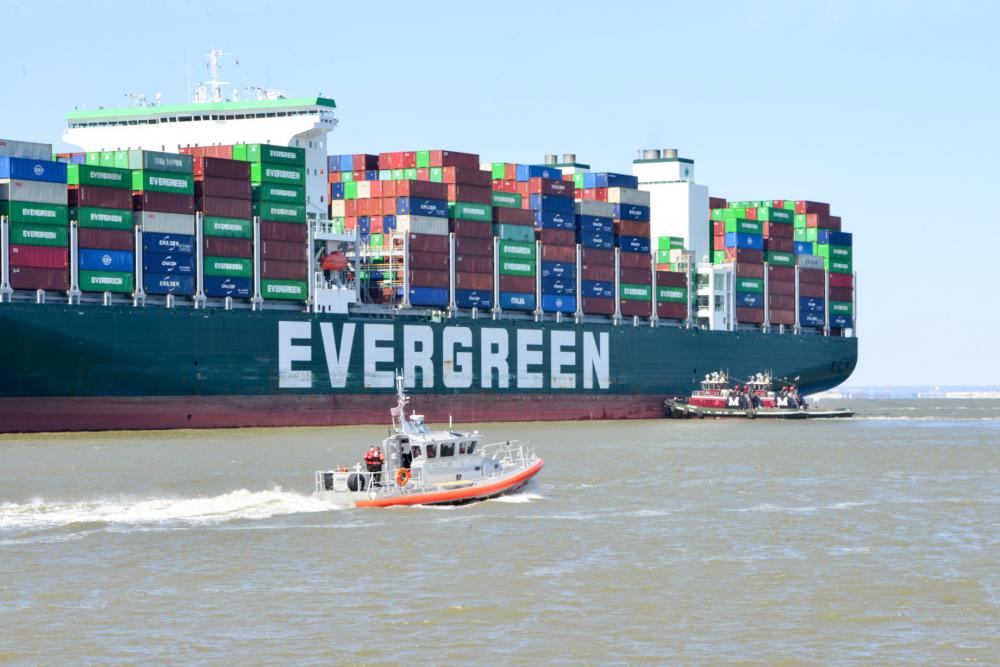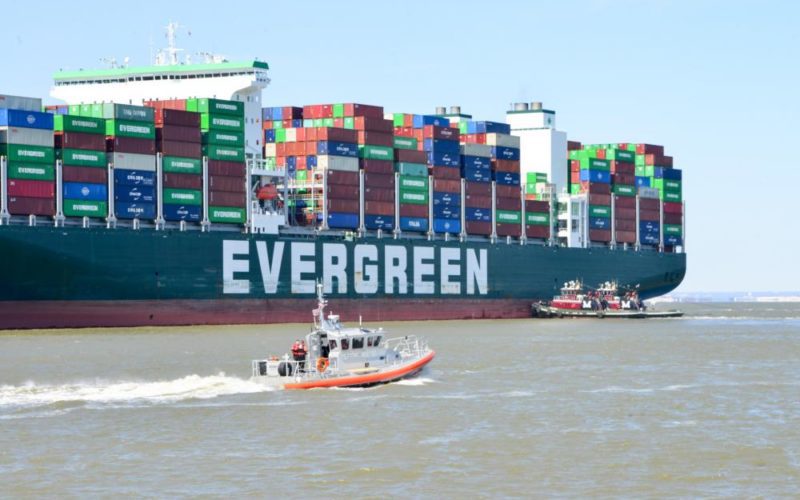(BALTIMORE) — The U.S. Coast Guard, Maryland Department of the Environment and Evergreen Marine Corp., in partnership with multiple other responders, have announced a revised strategy to refloat the containership Ever Forward.
Salvage experts determined they would not be able to overcome the ground force of Ever Forward in its current loaded condition. The Coast Guard said the new strategy of removing containers offers the best chance of successfully refloating the 1,095-foot ship, which grounded March 13 in Chesapeake Bay near Craighill Channel.
The previously announced dredging will continue to a depth of 43 feet and containers will now be removed as soon as the installation of two crane barges, with suitable lift heights to remove containers, is completed.

The containers will be removed in daylight hours only for safety purposes from both the port and starboard sides and placed on receiving barges. The barges will then shuttle the containers back to their original onboarding facility, Seagrit Marine Terminal in Baltimore, where they will be offloaded by shore-based handling gear.
Once the containers are removed, tugboats and pull barges will attempt another refloat. The shipping channel will remain open to one-way traffic during these operations; any changes will be announced via normal maritime means. All aspects of the operation should take approximately two weeks, but that timeline may change based on weather conditions and other variables.
A 500-yard safety zone around the ship in the Chesapeake Bay will continue for the duration of the operation, and the adjacent shipping channel will remain unaffected. The zone has been established to provide for the safety of people involved in the salvage operation as well as the integrity of the marine environment.
Ensuring the ship’s stability and monitoring for any signs of pollution continue to be top priorities for the unified command and responders. In addition to regular soundings of fuel and ballast tanks, a naval architect and salvage master are remotely monitoring a recently installed sensor system to constantly evaluate the ship’s stability and integrity and will continue to do so throughout the refloat operation. They will also continue to conduct regular visits to the ship.
Mariners are requested to monitor VHF Channel 16 for the latest information.
– U.S. Coast Guard

